I was super excited when I visited Turkey for the first time, the summer after my senior year of high school. The Ottoman Empire and the importance of Constantinople/Istanbul was taught extensively in my school’s history classes, and it was incredibly special to visited places that hold such significance in the world’s culture and history.

Photo by Megha Srivastava
Because Turkey is huge, part of both Europe and Asia, it is incredibly diverse. There are Greek, Arabic, Armenian, and Persian elements, and the variety of landscapes means that different regions have their own specialties, too. I could write a list of over 50 foods to try, but for a first-time visitor to this beautiful country, these are the top ten food experiences in Turkey:
1. Sample Turkish Delights in Hafiz Mustafa
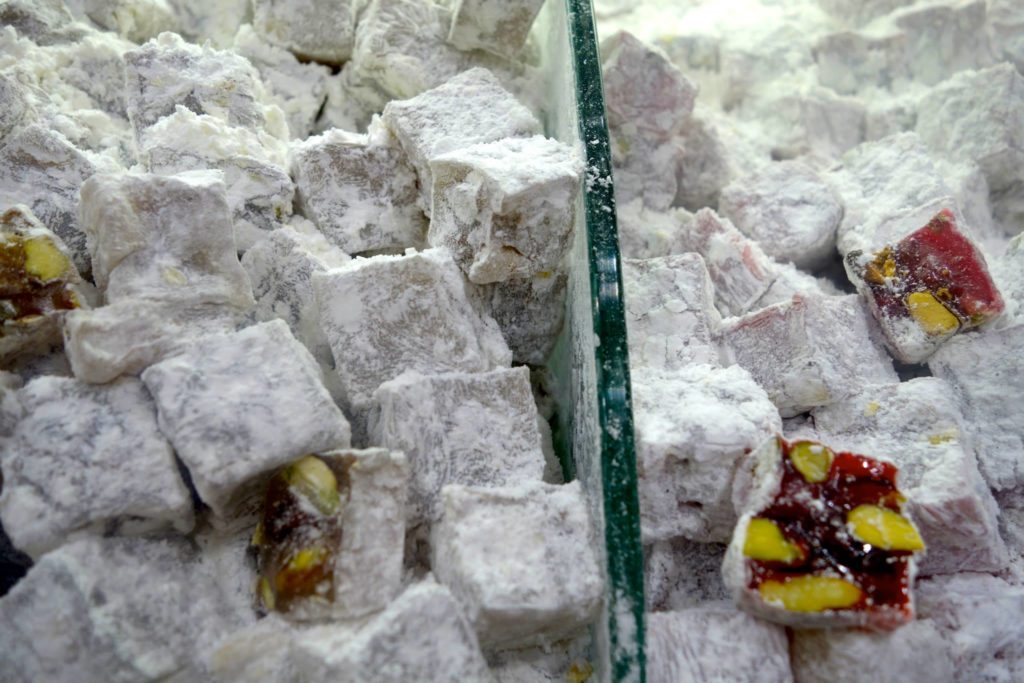
Photo by Megha Srivastava
The first time I ever heard of Turkish delights was in The Lion, The Witch, and The Wardrobe. I always wanted to know what the mysterious sweet Edmund was obsessed with tasted like. After visiting Istanbul, I finally understood.
Turkish delights, or “lokum,” are typically cubes of sugary, starchy gel containing nuts and dusted with powdered sugar. They come in a variety of flavors, like rosewater, pistachio, orange, lemon, and mint. My first time trying them was as a welcome gift at the lovely Sirkeci Mansion.
I instantly fell in love with the subtle nutty and sugary flavor, and was recommended to check out the store, Hafiz Mustafa. Hafiz Mustafa has been serving coffee and sweets for over 150 years, and the flavor and variety of options shows why it has maintained its popularity.
2. Sip Lentil Soup on a Rooftop Restaurant
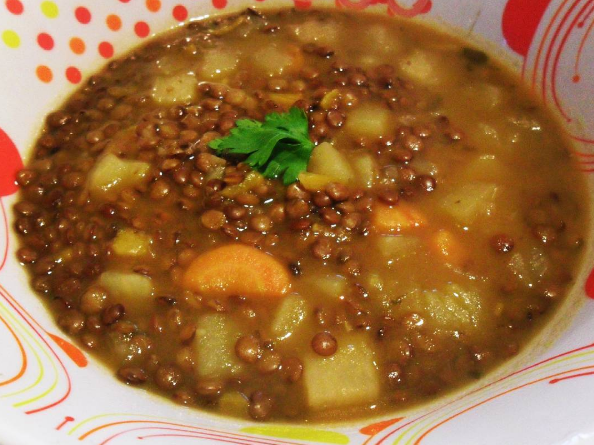
Photo courtesy of @station92 on Instagram
The first meal we had in Turkey was dinner on the rooftop of our hotel in the Sirkeci district of Istanbul. Sirkeci is a beautiful district that includes the historical train station of the Orient Express. It’s location between the Sultanahmet and Eminonu districts mean that from the rooftops of Sirkeci, you can see the spires, minarets, red-roofs and turquoise ocean waters that make Istanbul iconic.
The best way to warm up from the chill of the ocean breeze and rooftop wind is with lentil soup: a spicy, heavenly mix of red lentils, cumin, olive oil, bay leaves, garlic, cream, and lemon. Yum. The aromatic blend of spices is simultaneously homey and adventurous. It’s comfort mixed with a variety of flavors, just like Istanbul.
3. Watch Ramadan Festivities along the Bosphorus Strait
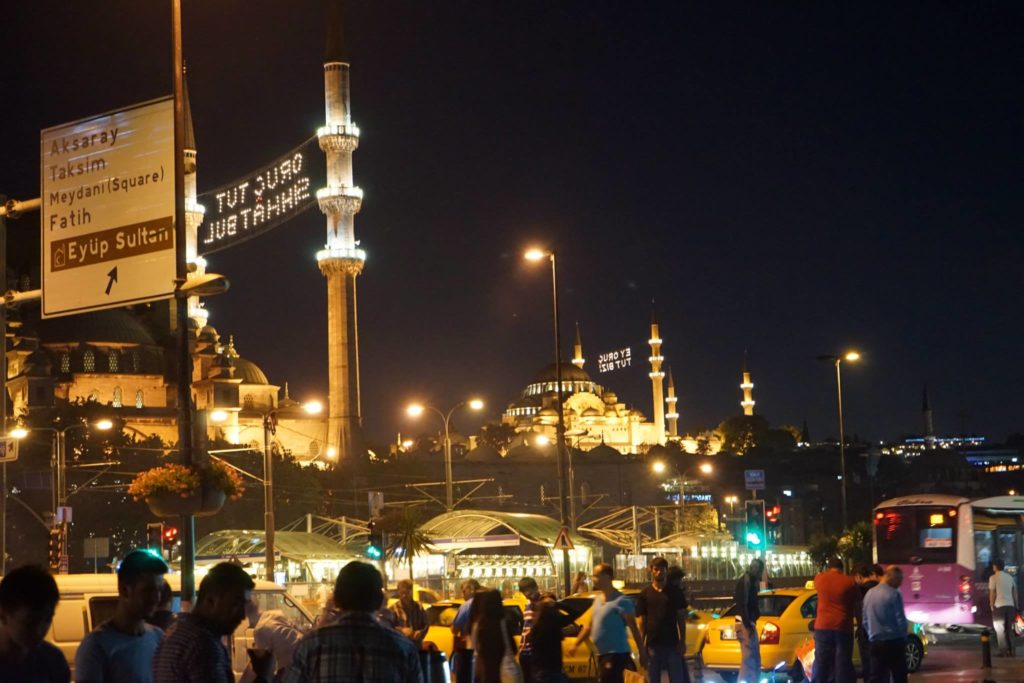
Photo by Megha Srivastava
We were incredibly fortunate to visit Turkey during the month of Ramadan, a month of fasting observed by Muslims around the world. Although many restaurants were open throughout the day, the majority of the city gathered after sunset to break the fast.
All the storefronts and mosques are decorated with glittering holiday-lights; however, my favorite part as an observer was watching how food brought the community together. At nighttime, long white tables and chairs would be set up along the ocean and anyone could come, get a plate of free food, and eat with each other. It was amazing watching a crowd of people peacefully waiting until sunset, and the community aspect of sharing food with each other.
4. Walk Among Fresh Fish in Uskudar
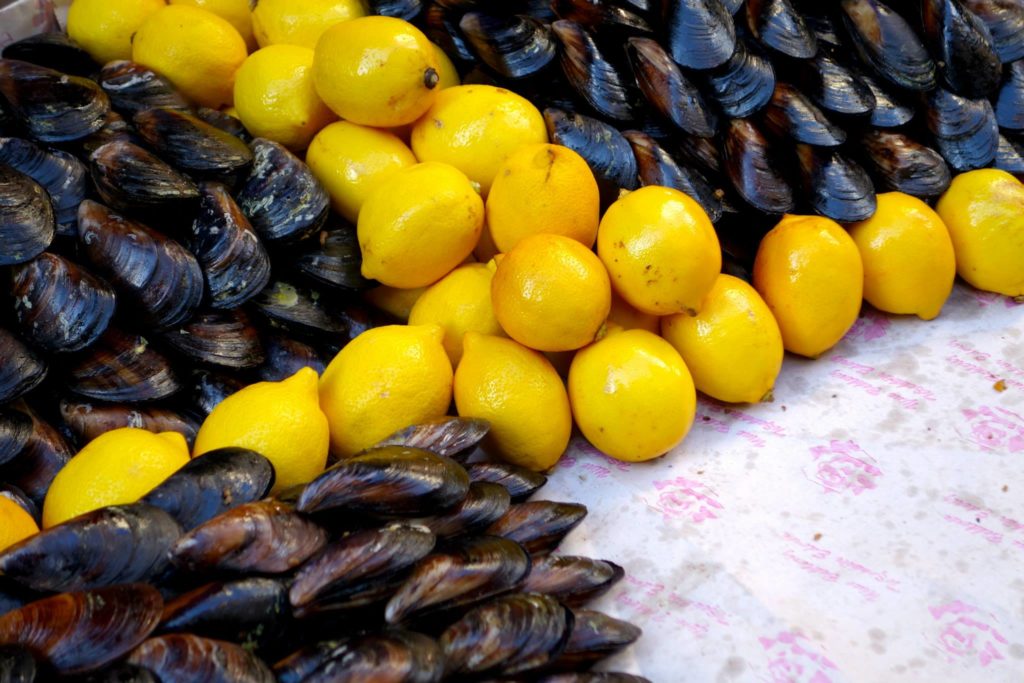
Photo by Megha Srivastava
On the Asian side of the Bosphorus strait is the bustling district of Uskudar. The instant we got of the ferry, I was immersed in an incredibly fast-paced life. A huge crowd was marching in protest, and after weaving in an out amongst the crowds of people, I reached a street filled with fish stalls and restaurants serving seafood.
While there was definitely a variety of fish, my favorite was a table of fresh mussels and lemon, just steps from the water. The contrasting colors of yellow and navy were stunning, and I came to learn that the sweet and spicy fresh treats are an interesting facet of Turkey’s history, regional diversity, and class status. In fact, a documentary was made dedicated to the fresh seafood found around Istanbul.
5. Browse Spices in the Egyptian Bazaar
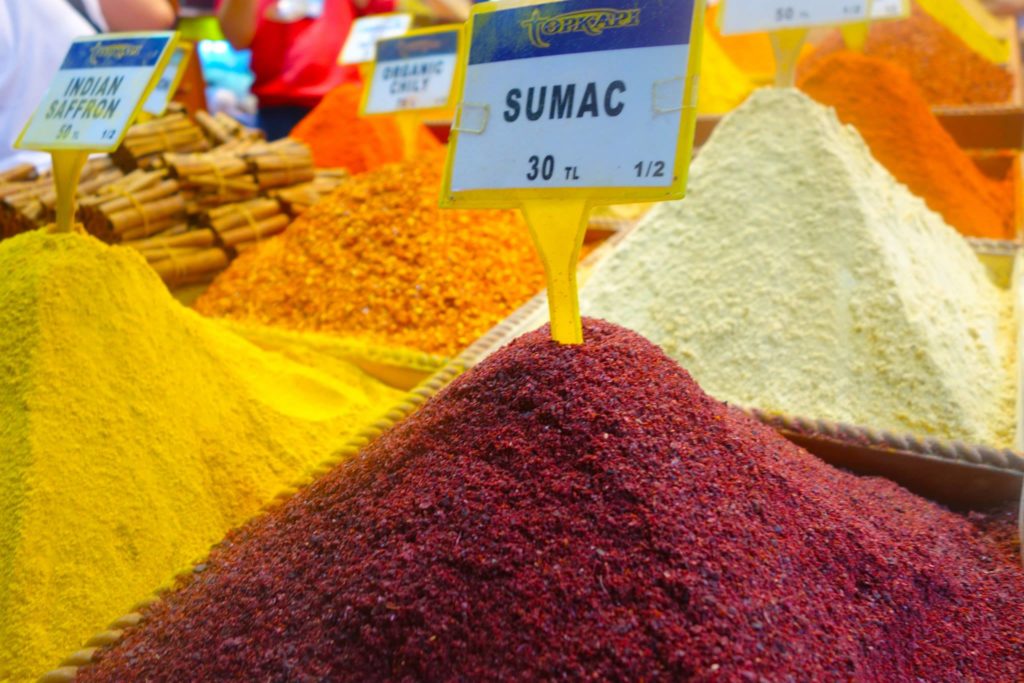
Photo by Megha Srivastava
Although Istanbul’s Grand Bazaar is heavily advertised and talked about, in reality it’s filled with tourists and tourist-geared marketing. While still beautiful, it was difficult to take photos and enjoy the ambience. However, the Spice Bazaar, also known as the Egyptian Bazaar, is a smaller but much more fun bazaar close by. The Egyptian Bazaar is named as is because it was built with tax revenues from the Egyptian part of the Ottoman Empire, and so belongs in a beautiful, old building.
Every storefront in the Egyptian Bazaar is filled with piles of spices over a rich range of color: crimson reds, burnt yellows, pale greens. Dried fruits and tea leaves are also sold, and luxurious threads of saffron glitter like gold. It’s a #foodie’s dream: inhaling the eye-watering smell of spices, immersed in a colorful world.
6. Taste Wine in an Alien Landscape
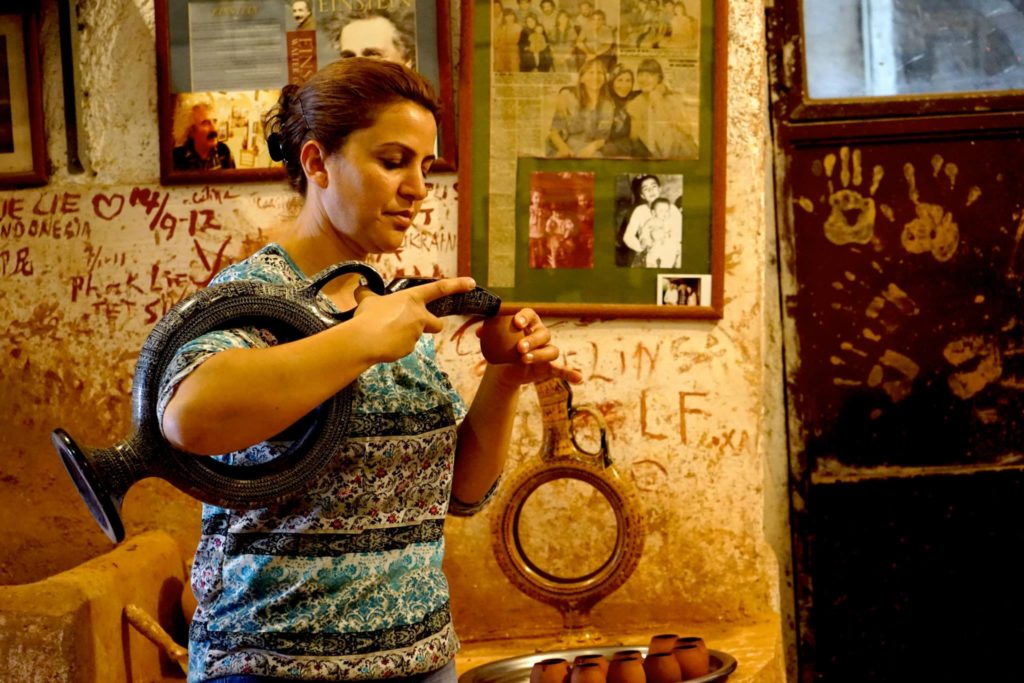
Photo by Megha Srivastava
Cappadocia is an other-worldly region in central Turkey, known for its “fairy-chimneys” and stunning geological formations. There is a huge underground network in Cappadocia, used by Christians as hiding places before the religion was accepted. Moreover, up in the tall shards of volcanic rocks are tiny little caves used as monasteries, filled with luxurious frescoes and mosaics.
Although the history and geography is the main draw of Cappadocia, the region has produced some award-winning wines. Sparkling and white wines are especially popular, and while the heavy, slick wine tours of Napa Valley and French valleys won’t be found here, it’s an incredible treat to enter a small home and taste some family-made wine. It’s common to serve wine using the ancient Hittite wine jug, a beautiful ceramic ring-shaped jug.
7. Balance Complex Spices with Cacik
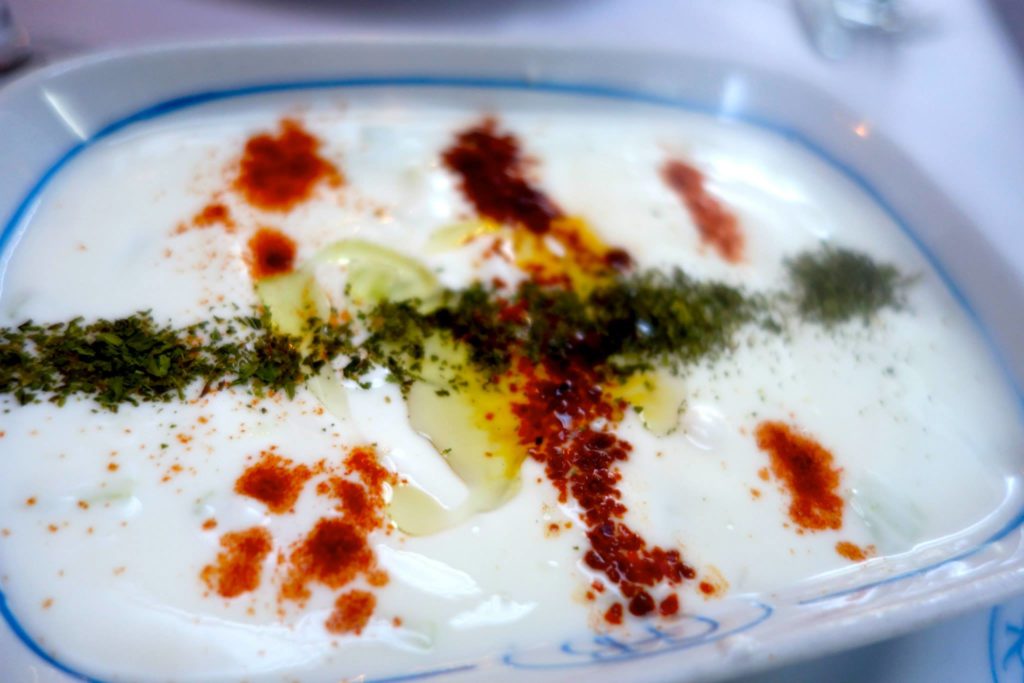
Photo by Megha Srivastava
I am a huge fan of savory-tasting yogurt. With cuisines that use a lot of spice, yogurt is a wonderful, healthy way too cool off the heat. Turkey’s version of a yogurt side is called cacik, which shares its roots with Greek’s Tzatziki. A mix of yogurt, olives, cucumbers, garlic, vinegar, and dill, cacik is served in basically every restaurant as a Meze, or small side/appetizer.
However, it was pretty common in Turkey to cover the cacik with additional spices, such as paprika and chili paste. This made cacik almost act as a dish as its own, and with a side of Turkish Flatbread, there is nothing like cooling of at an open-air café in the humid Istanbul heat after a tiring day with cacik.
8. Experience Turkey’s Diversity with Manti on Istiklal Street
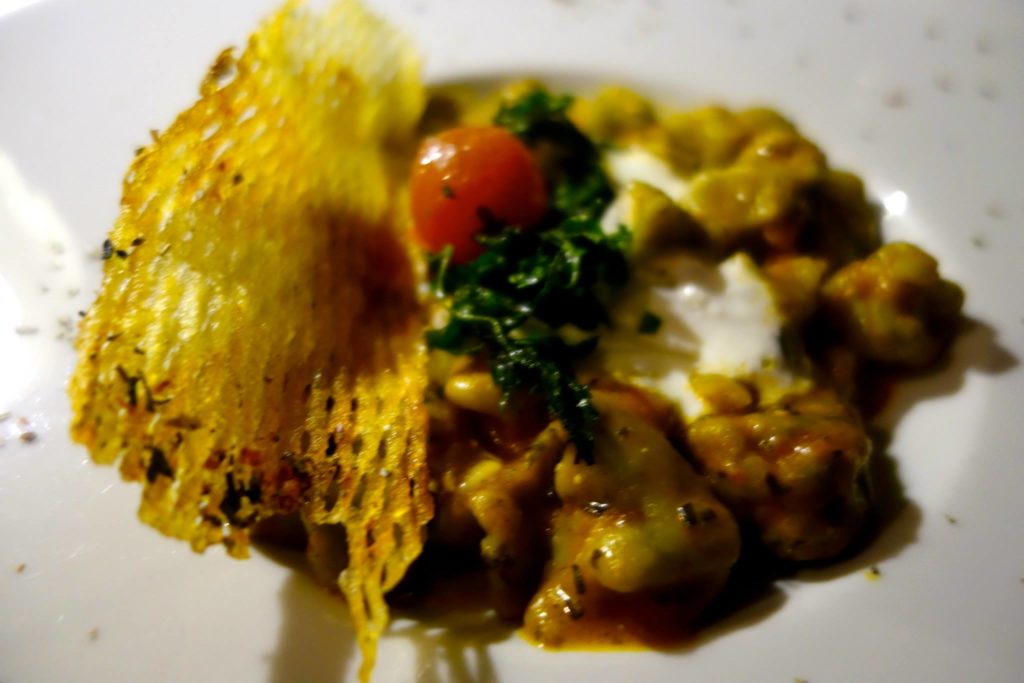
Photo by Megha Srivastava
Manti are a kind of dumplings that are found in a variety of places, all reflective of the melting pot of cultures in Central Asia. There is Uzbek manti, Kazakh manti, Armenian manti, Islamic Chinese manti, Persian Manti, and, of course, Turkish manti. They are basically delicious, steamed bundles of spiced meat, typically lamb, often served with yogurt and spices. Like creamy, heavenly ravioli crossed with Silk Road spices.
Found throughout the country, a lot of new chefs in the food scene are putting their own spin on manti. It’s not uncommon to find chefs in new restaurants experiment with different kinds of fillings, folding techniques, cooking methods, and spices with manti. Istanbul’s famous Istiklal Caddessi has many such restaurants, often on the top floors with stunning views.
9. Discover a Variety of Olives by the Aegean Sea
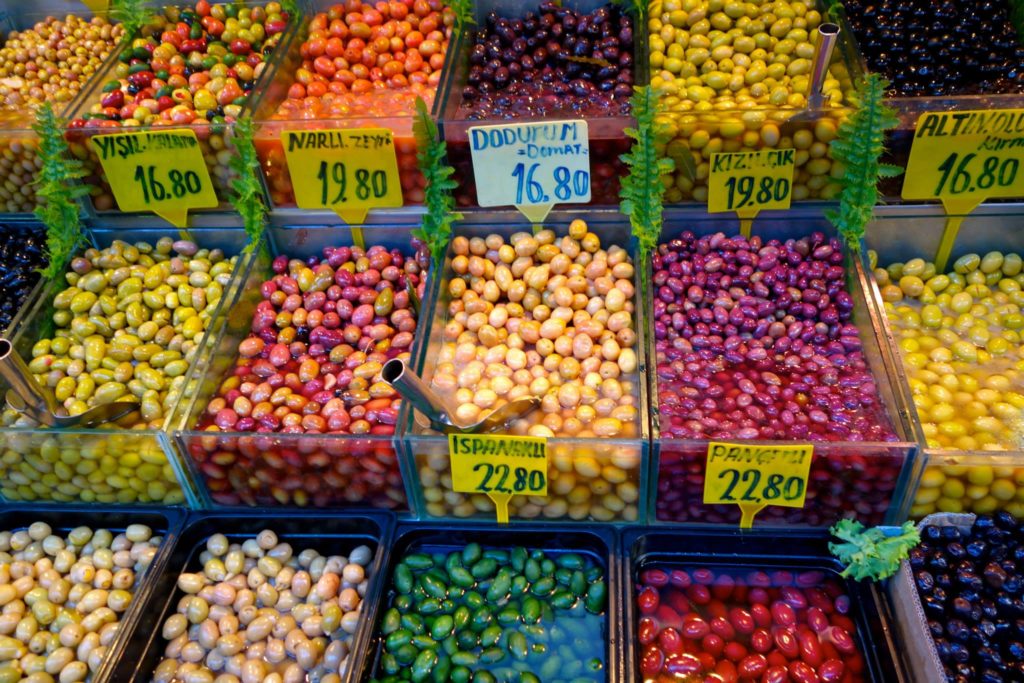
Photo by Megha Srivastava
I knew that olives, primarily from places with Mediterranean climates, would be used a lot in Turkish cuisine. However, I did not realize the huge variety of olives that was possible. I’m so used to the tiny black olives on my Dominos pizza and the occasional dark purple or pale green olive in Italian restaurants, that I didn’t realize that a whole rainbow of colors existed in the world of olives. Turkish towns like Izmir that are near the Aegean sea have plenty of local markets where these olives are sold.
10. Make Midnight Runs for Baklava
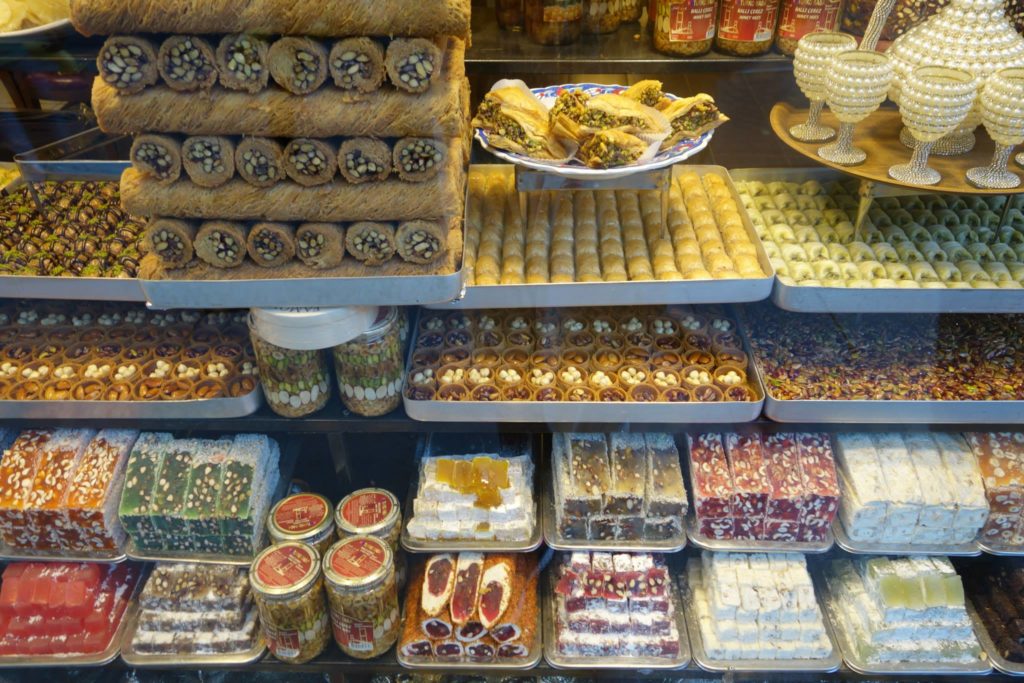
Photo by Megha Srivastava
Out of all the many delicious desserts in the world, baklava is point-blank my favorite. My opinion may change as I go deeper in the world of sweets and confectionary delights, but for now, I can’t think of Turkish cuisine without thinking about Baklava. Everything great about desserts are in Baklava: layers of phyllo dough provide the carbs, chopped pistachios provide the textures, rose syrup provides the aromatic richness, and honey provides the sweetness.
Literally every single bakery in Istanbul sells Baklava. Ignore the calories, and experience the thrill of the city by hunting for the best Baklava at midnight. Istanbul, a city of 14 million people, is bustling 24 hours a day. The syrupy textures and layers of baklava simply remind us of the rich threads of culture and history of behind Turkey’s magic.


